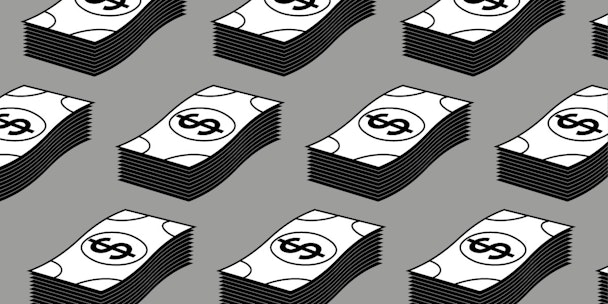IPA Bellwether predicts 4 years of slashed UK ad budgets
The latest IPA Bellwether report is a story of two halves. UK marketing budgets have continued to grow in the second quarter, despite the economic headwinds. However, the outlook for the next four years is bleak, with predictions of cuts to account for stalling consumer spend.

Marketing spend is in decline
According to the survey of British companies, around a quarter (24.2%) raised their total marketing expenditure during the second quarter of this year, while 13.4% reported cuts. The IPA said that at +10.8%, the resulting net balance remained “in solid positive territory,” but indicated a slight slowdown in growth when compared to the opening quarter of 2022 (+14.1%).
Not surprising then that the mood among marketers is at its lowest since the pandemic took hold of the UK in 2020. Nearly half (40.3%) of those surveyed were pessimistic on the outlook for the remainder of the year as inflation continues to increase and consumer spending declines. Just 13.6% were optimistic that their business would be unaffected.
The IPA said that for the first time since Q3 2020, the height of Covid-19, own-company financial prospects slipped into negative territory. Almost a third (30.7%) of survey respondents were pessimistic about their own business prospects, compared to 21.2% who were more optimistic. This has informed the decision to downgrade growth up to 2026.
For the remainder of this year, the IPA has cut its ad growth forecast to 1.6% (from 3.5% previously), while the forecast for 2023 has been cut from 1.2% to 0.5%.
Already we have seen the likes of Unilever and Deliveroo vow to get “more efficient” with their spending, while brands including Hotel Chocolat have promised shareholders they will make cuts.
With the growth path beyond 2023 now looking more uncertain and the likelihood of ongoing economic risk, the IPA’s forecasts for 2024, 2025 and 2026 ad spend have also been cut. It now expects growth of just 1.4% (from 1.7%), 2.0% (from 2.2%) and 2.3% (from 2.4%) respectively.
Paul Bainsfair, IPA director general, said marketers are understandably concerned, but urged them to resist the temptation to cut spend.
“All the IPA’s analysis on who does best in a downturn shows that the companies that recover fastest are the ones that either maintain or increase their marketing spend during difficult economic times,” he added. “Equally, cutting ad budgets – relative to competitors’ spend – in a recession undermines companies’ ability to grow future market share and profits.”
It echoes comments made by Procter & Gamble’s chief marketing officer Marc Pritchard. At the industry’s annual congregation at Cannes Lions, he issued a call for his fellow marketers to get finance bosses on side to “double down” on spend.
Q2 2022 winners and losers
The standout sectors in the second quarter were events, where marketing budgets were up 22.2%, and public relations, which recorded a 3.7% rise in budgets – both growing from the previous quarter.
“[It’s] another fantastic result for the experience sector,” said Patrick Reid, chief executive officer, Imagination – a design company that creates immersive experiences for brands such as Lego, Samsung and Jaguar.
“The findings reflect an unaffected appetite for live experiences and face-to-face interaction from Q1, made clear by the success of events such as Glastonbury, Wimbledon, Pride and Uefa Women’s Euro 2022. Brands are riding the wave of consumer demand for real-life experiences, embracing face-to-face activities and activations [...] with arguably our first restriction-free summer since 2020 in full swing, we predict that these positive results will continue into Q3.”
But it was less positive in other sectors. Online and video advertising saw budgets increase, but it was dramatically less than in previous quarters. Audio and out-of-home (OOH) saw the deepest declines, said the IPA, down 16.4% and 15.9% respectively.
Some agencies, however, remain cautiously optimistic.
Chris Hogg, chief revenue officer at Lotame, a data management platform, said it has seen “softness in media” for Q1 followed by some stability in Q2. “We’ll choose to read that as a positive sign,” he said.
S4 Capital chief Sir Martin Sorrell previously told The Drum that the mood among its clients has been “realistic” and that demand for its services wasn’t on the wane.
“One CMO told me he’s more concerned with awareness and brand than tactical, measurement and low funnel. Generally, brands are very focused on performance, measurement, media mix modeling, first-party data and bringing the signals together in a meaningful way. They’re being more tactical,” he said.
Matt White, VP EMEA at tech firm Quantcast said there's been a "buffer" to CMO's marketing budgets provided by the lack of spending in the previous two years and that reserve should see them out through the remainder of 2023.
“September is a big time for our industry," he added. "New tech releases including the new iPhone, and new cars are released, pumping a huge amount of revenue into advertising. Industries such as travel are still seeing an enormous boost, riding the wave of pandemic cabin fever and I don’t see this fading. We’re cautiously optimistic about the next quarter, but it would be foolish to be unaware of how this turbulent economy can touch every industry.”

